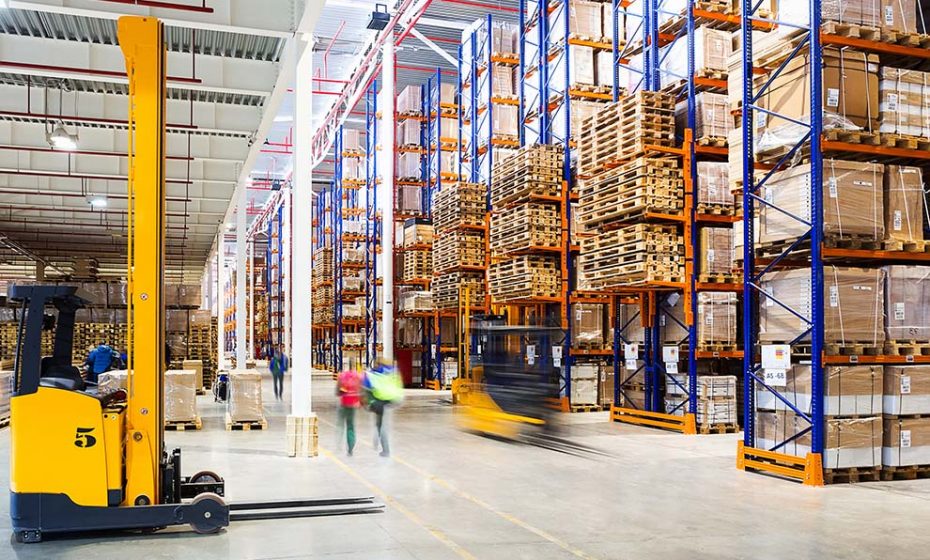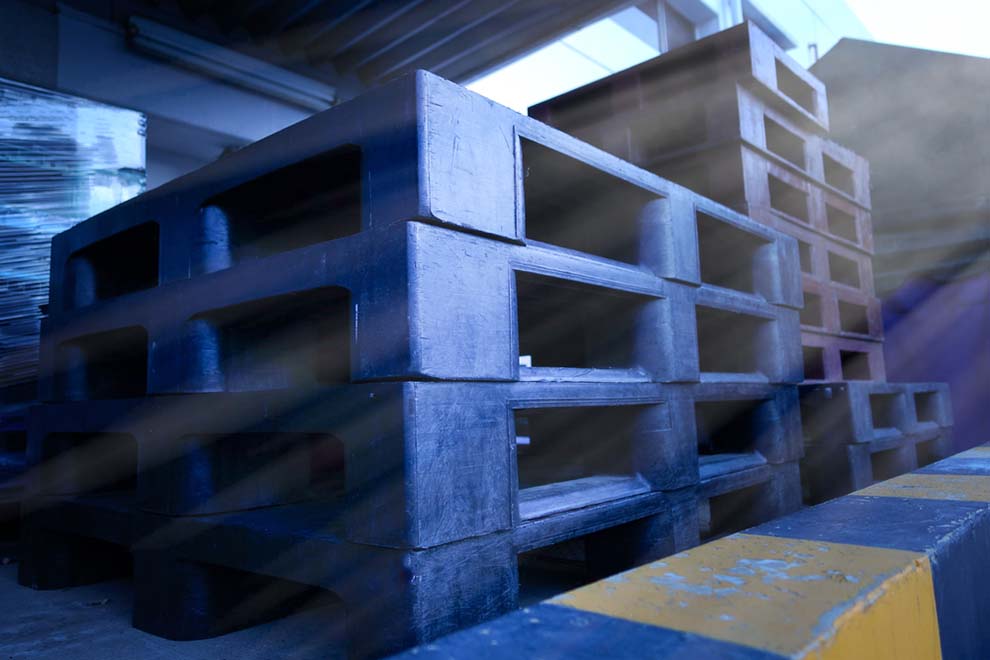Every warehouse or industrial plant needs a durable set of pallets, but there are plenty of options to choose from. When loading your equipment or goods onto the pallet, be careful not to exceed the dimensions or you risk damaging your inventory.
The container should be the same size or smaller than the pallet for easy handling. You will need to measure the width and length of your containers and compare these figures to those of the pallet to make sure it’s a perfect fit.
Don’t make the mistake of assuming your container will fit onto the pallet. You should only attach a loaded container if you’re absolutely sure it will fit.
Why Knowing Pallet Square Footage Matters in Freight Shipping
Pallet square footage plays a key role in freight shipping, especially when planning for storage space, weight distribution, cost, and load capacity. Standard pallet dimensions, like the 48×40 GMA pallet backed by the Consumer Brand Association, make it easier to ship freight efficiently across various industries and meet supply chain requirements.
Knowing how much weight your pallet can handle helps prevent overloading and supports better pallet shipments. Whether you’re using block pallets, solid deck pallets, or specialized pallets designed for specific products, square footage affects how items are stacked, shrink-wrapped, and moved with a pallet jack for safe, efficient handling.
Check Out Our Variety of Pallets for Sale
Standard Pallet Size and Square Footage Explained
Most pallets come in at 48” x 40”, which comes out to 13.333 square feet. This is the industry standard in North America and is often referred to as the GMA pallet, named after the Grocery Manufacturers Association. These pallets are commonly used in pallet shipments today across the retail, food, and beverage industries. They typically include top or bottom boards with stringer support and are designed for efficient movement with forklifts or pallet jacks.
The three most common pallet sizes are 48” x 40”, 42” x 42”, and 48” x 48”. These sizes are frequently used across various industries, including the chemical industry and large-scale manufacturing, where load types and storage requirements demand flexibility.
Source: sarawut muensang/Shutterstock.com
The square footage works out to 12.25 square feet for 42” x 42” pallets, and 16 square feet for 48” x 48” pallets. These larger pallets are ideal for bulky or oddly shaped loads, particularly when using double wing pallets or double face pallets, which offer more surface support. Square footage can also impact shrink wrapping, packing tape use, and how well the load sits within a container or trailer.
How to Calculate Square Footage Based on Pallet Dimensions
Not all pallets are the same size. If you bought a used pallet or can’t find an identifying marker, use a measuring tape to calculate the exact dimensions. The formula to calculate the square footage of a pallet is:
(Length in inches × Width in inches) ÷ 144 = Square Feet
If your measurements are already in feet, you can simply use:
Length (ft) × Width (ft) = Square Feet
Let’s break it down step by step to make sure the conversion is clear and you’re using the correct formula. Multiply the width by the length to get the total square inches, and divide that number by 144 to get the square footage. Many people mistakenly divide by 12 instead of 144 here. However, since there are 12 inches in a foot, there are 144 square inches in a square foot.
Square footage is just one part of the equation. The material and construction of the pallet can also have an effect.
Order a Pallet Container for Your Industrial Equipment Plant
How Pallet Material Affects Size, Weight, and Durability
Most pallets can hold up to 4,800 pounds. Most standard pallets weigh around 37 lbs. and are 6.5 inches tall.
The size and weight of your pallet will vary based on the materials. Steel and metal pallets are more secure with higher weight capacities, but they weigh more than other varieties, which will increase the cost of shipping. However, metal pallets are the preferred choice when shipping metal industrial equipment and supplies. It’s always better to err on the side of caution.
Plastic pallets are lighter than metal pallets with excellent weight capacities. They are durable and reusable, helping you keep your shipping costs low.
Wooden pallets tend to be the worst choice for industrial plants. They tend to fall apart easily over time, spreading dust and debris all over the floor. The dimensions of the pallet may change as the wood starts to warp or chip away. They will also lose their structural integrity after multiple trips, reducing the weight capacity.
Source: Siwakorn1933/Shutterstock.com
Square Footage of Common Pallet Sizes
Standard pallet sizes vary by region, which can impact how goods are stored, loaded, and shipped, especially in international supply chains. Knowing the standard pallet dimensions used in different countries helps you choose the right fit for your operation. This table provides a quick comparison of common pallet types and their square footage.
|
Pallet Size |
Dimensions (inches) |
Square Feet |
|
Standard (US) |
48” x 40” |
13.33 sq ft |
|
Euro Pallet |
47.24” x 31.50” |
10.34 sq ft |
|
Australian Standard |
45.9” x 45.9” |
14.63 sq ft |
|
Asian Standard |
43.3” x 43.3” |
13.02 sq ft |
Understanding regional pallet standards is key to avoiding wasted space and improving load efficiency. Whether you’re dealing with Euro pallets, American GMA pallets, or Asian and Australian standards, having the right size from the start can reduce shipping costs, streamline handling, and ensure compatibility across global freight and storage systems.
Understanding Square Footage for Better Pallet Shipping Decisions
Choosing the right pallet starts with knowing your dimensions, but there’s more to it than length and width. From four way pallet access to parallel and perpendicular stringers, the design and material can affect how much weight it holds and how evenly that weight is supported. While traditional pallets may work for local shipments, international shipping often requires standardized dimensions. American pallets and those recognized by the European Pallet Association may vary significantly, so it’s important to plan.
Looking for reliable, cost-effective options? Explore new and used wood pallets, stringer pallets, and more at Container Exchanger — where smart businesses find the right pallet for every shipment.
FAQs
What is pallet footprint vs. square footage?
Pallet footprint is essentially the physical space a pallet occupies on the floor; normally, this will be the same as the pallet's square footage. However, footprint may also include slight overhangs from bottom deck boards or edge reinforcements. Square footage focuses solely on the usable surface area, especially when determining the standard pallet size in feet for loading and racking.
Are all pallets the same common pallet dimensions?
No. Though 48” x 40” is the most common pallet dimension in the U.S., you’ll see different pallet sizes depending on the location and the industry. Some pallets are built with unique deck board configurations or bottom deck reinforcements to support specific loads. Choosing the right size ensures your product sits securely and supports the weight evenly.


